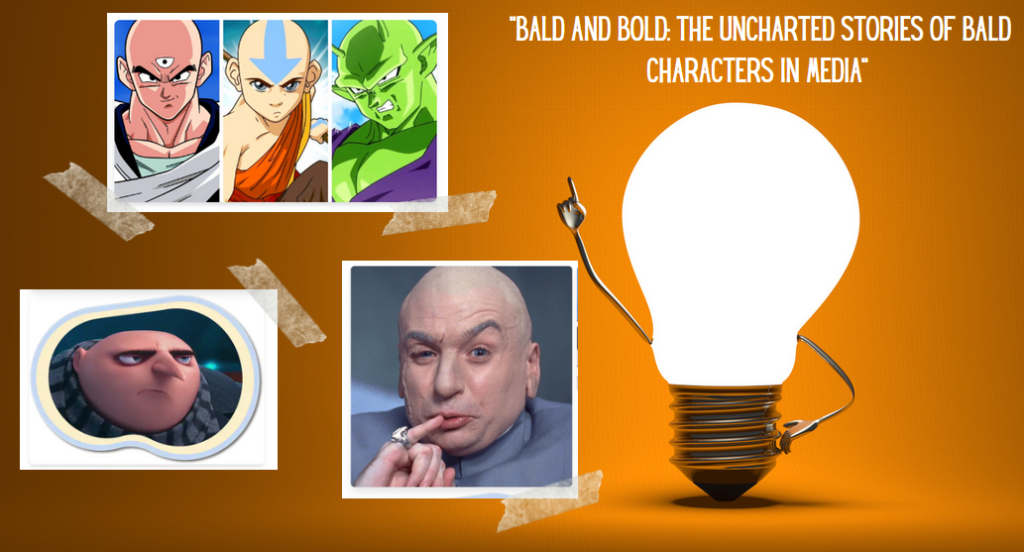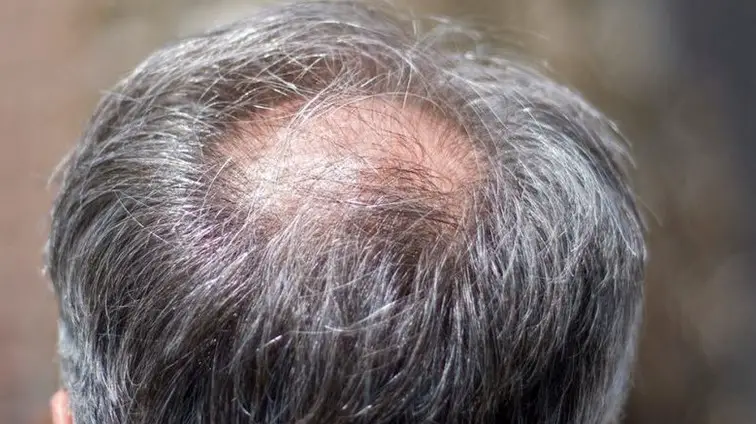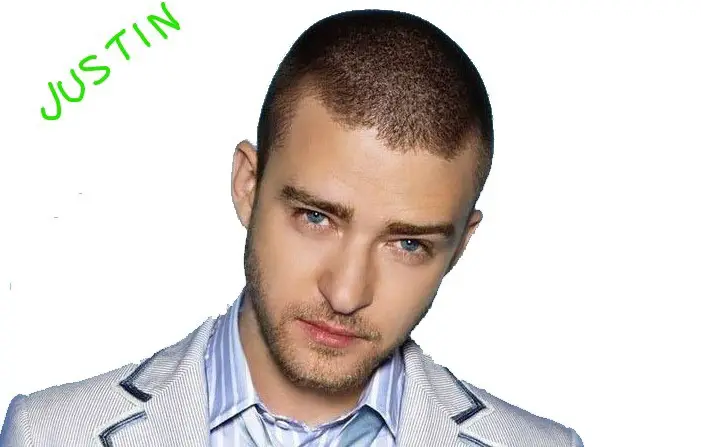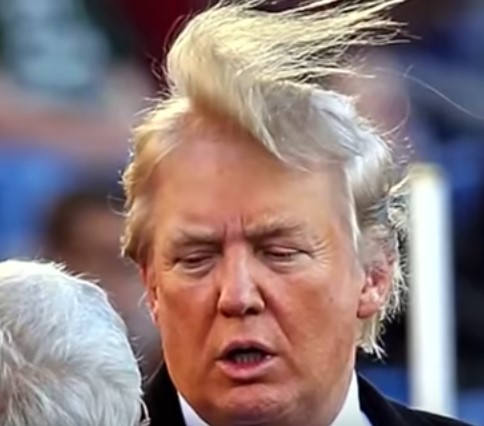There’s no mistaking a bald character when you see one on your favorite TV show or in the movies. But what is it about these characters that make them so captivating?
The Power of the Bald Persona
Baldness, often seen as a mere physical trait, has evolved into a powerful symbol in media. From the wise old sage to the menacing villain, bald characters have carved a unique niche in the world of entertainment. But what is it about a hairless head that captivates audiences and storytellers alike?
In my early days of movie marathons, I remember being intrigued by the bald antagonist in action films. Their shiny heads, often juxtaposed with a rugged beard, became synonymous with strength and, sometimes, malevolence. But as I delved deeper into the world of cinema and television, I realized that baldness wasn’t just a stylistic choice. It was a narrative tool, a symbol, and sometimes, a statement.
Consider the iconic Professor X from the X-Men series. His baldness wasn’t just a look; it was a reflection of his wisdom, his psychic abilities, and his serene demeanor. On the other hand, we have characters like Walter White from “Breaking Bad,” whose transition to baldness marked a turning point in his descent into the criminal underworld.
Why Baldness Resonates:
-
- Relatability: Many people experience hair loss, making bald characters instantly relatable.
- Symbolism: Baldness can symbolize purity, menace, wisdom, or transformation.
- Standout Factor: In a sea of characters, a bald one often stands out, making them memorable.
Related Articles:
- Bald Celebrities Rocking the Bearded Look
- Laughing It Off: Jokes About Baldness
- Iconic Bald-Headed Cartoon Characters
- Bald Characters Who Stole the Show in Movies
But it’s not just about the men. Bald female characters and hair transplant female celebrities have also made their mark, challenging societal beauty standards and redefining femininity. Remember Furiosa from “Mad Max: Fury Road”? Her baldness was a testament to her resilience, her rebellion, and her fierce spirit.
Now, if you’re curious about how real-life personalities have influenced these on-screen characters, I’ve got just the article for you. Dive into the world of male celebrities with receding hairlines who embraced their baldness and discover the stories behind their iconic looks.
And for those of you who’ve always wondered about the cultural interpretations of bald characters, don’t miss out on this deep dive into bald headed cartoon characters from different cultures. It’s fascinating to see how different societies perceive and portray baldness in media.
Bald characters are more than just a visual element. They’re a reflection of society, culture, and the human psyche. They tell stories of strength, struggle, wisdom, and rebellion. And as media continues to evolve, I’m excited to see how the narrative around baldness will transform.
Best bald characters in Film & TV
There are many bald characters in film, TV, cartoons, anime, and literature. Here are some examples long with links to their respective bios or relevant information:
| Category | Character | Link |
|---|---|---|
| Film & TV | ||
| Judge Holden (Blood Meridian) | Bio | |
| Kojak (Kojak) | Bio | |
| King Mongkut (The King and I) | Bio | |
| Cypher (The Matrix) | Bio | |
| Professor Charles Xavier (X-Men) | Marvel Bio | |
| Mr. Strickland (Back to the Future) | Bio | |
| Cartoons | ||
| Quincy Magoo | Bio | |
| Stanley Griff | Bio | |
| Popeye | Bio | |
| Elmer Fudd | Bio | |
| Caillou | Bio | |
| Abe Simpson | Bio | |
| Charlie Brown | Bio | |
| Ollie Williams | Bio | |
| Anime | ||
| Doppo Orochi (Baki The Grappler) | Bio | |
| Saitama (One Punch Man) | Bio | |
| Krillin (Dragon Ball Z) | Bio | |
| Genos (One Punch Man) | Bio | |
| Aang (Avatar, the Last Airbender) | Bio | |
| Literature | ||
| Lord Voldemort (Harry Potter) | Bio |
The Unsung History of Bald Characters
From the silver screens of Hollywood to the colorful panels of comic books, bald characters have always held a unique place in the world of entertainment. Their journey, much like the changing tides of societal norms, has been one of evolution, acceptance, and celebration.
From Stigma to Stardom
Baldness, once a mere aesthetic, often relegated characters to the sidelines or, worse, typecast them as villains. I remember a time when a bald movie character was predictably the antagonist, their lack of hair seemingly symbolic of a lack of morality. But as storytelling evolved, so did the roles these characters played. No longer were they just the sidekicks or the villains; they became the heroes, the heartthrobs, and the protagonists. Their journeys, struggles, and triumphs became central to the narrative, transforming them from mere characters to icons.
The 80s: More than Just a Hairless Trend
The 1980s, a decade known for its flamboyant fashion and groundbreaking movies, also saw a shift in the portrayal of bald characters. This was the era of Jean-Luc Picard, of Kojak, of strong, bald leaders who commanded respect not in spite of, but because of, their baldness. The bald 80s characters weren’t just memorable; they were iconic. They represented a break from tradition, a challenge to the status quo. And in doing so, they paved the way for future characters to be celebrated for their uniqueness, not just their hair (or lack thereof).
Discover more about the iconic bald figures of the 80s here.
The Modern Era: Breaking Stereotypes
Fast forward to today, and bald characters are everywhere. From action heroes to romantic leads, from bald tv characters in sitcoms to intense protagonists in dramas, baldness is no longer a limiting factor. It’s a choice, a style, a statement. Characters like Walter White from “Breaking Bad” or Agent 47 from the “Hitman” series are testaments to this change. They’re complex, multi-dimensional characters whose baldness is just one facet of their rich personalities.
Explore how today’s media is challenging stereotypes with its portrayal of bald characters.
Beyond the Screen: Real-life Inspirations
In the vast realm of entertainment, while fictional bald characters have left an indelible mark, real-life bald icons have equally, if not more, influenced the masses. Their journeys, struggles, and triumphs have not only inspired on-screen characters but have also reshaped societal perceptions about baldness.
Actors Who Embraced Their Baldness
The world of cinema and television has seen many actors, but few have turned their baldness into a signature style, making it an integral part of their on-screen persona. Think of Sir Patrick Stewart, whose bald head became synonymous with his iconic role as Jean-Luc Picard in “Star Trek: The Next Generation.” Or Bruce Willis, who, despite the industry’s obsession with perfect hair, became one of Hollywood’s biggest action stars.
- Sir Patrick Stewart: From Shakespearean stages to the captain’s chair of the USS Enterprise, Stewart’s baldness added gravitas to his roles.
- Bruce Willis: Whether it’s “Die Hard” or “Pulp Fiction,” Willis’s bald look became emblematic of the tough-guy image.
But it’s not just about embracing baldness; it’s about redefining beauty standards and challenging stereotypes. These actors didn’t just accept their receding hairlines; they celebrated them, proving that talent and charisma go beyond hair.
Discover more Famous Bald Celebrities who proudly sported their bald look and left an indelible mark in the industry.
The Influence of Bald Public Figures
Beyond the glitz and glamour of Hollywood, many bald public figures have left an indelible mark on history and culture. Their influence isn’t confined to their professional achievements; their baldness, and the way they carried it, has often become a symbol of their identity.
- Mahatma Gandhi: His bald head became symbolic of his simplicity and his unwavering commitment to non-violence.
- Michael Jordan: Arguably the greatest basketball player of all time, Jordan’s baldness became as iconic as his slam dunks.
| Public Figure | Known For | Influence |
|---|---|---|
| Mahatma Gandhi | Leader of the Indian independence movement | Symbol of peace and non-violence |
| Michael Jordan | Basketball Legend | Redefined sports branding and endorsements |
These figures, through their achievements and persona, have influenced countless on-screen characters. They’ve shown that baldness can be a symbol of strength, wisdom, and determination. Their real-life stories have inspired films, documentaries, and series, bridging the gap between reality and fiction.
If you’re intrigued by how real-life stories influence on-screen narratives, delve deeper into the world of bald villains and their real-life inspirations.
Diving Deep: The Psychology Behind Bald Characters
In the vast tapestry of media, bald characters have always held a unique place. But have you ever stopped to wonder why? Is it merely an aesthetic choice, or is there a deeper psychological reasoning behind it? Let’s dive deep into the minds of creators and audiences alike to unravel the mysteries behind the portrayal of bald characters.
The Bald Villain: A Psychological Perspective
From ancient myths to modern movies, villains have often been depicted as bald. But why? Is there a subconscious association between baldness and malevolence? Psychologically speaking, humans are wired to fear the unknown, and baldness, being less common, might be seen as “other” or “different.” This difference can be amplified in media to create an air of mystery or unease around a character.
Scary bald characters and bald horror characters often use their baldness as a tool of intimidation. Their shiny, hairless scalps can reflect light in eerie ways, adding to their menacing aura. Think of characters like Voldemort from the “Harry Potter” series. His baldness, combined with his pale skin and snake-like features, makes him instantly recognizable and fear-inducing.
But it’s not just about aesthetics. Baldness in villains can also symbolize a lack of humanity, a deviation from the norm, or a rejection of societal standards.
Baldness as a Symbol of Wisdom and Power
On the flip side, baldness has also been associated with wisdom, power, and spiritual enlightenment. Characters like Professor X from the X-Men series or Aang from “Avatar: The Last Airbender” are prime examples. Their bald heads aren’t just for show; they symbolize their vast knowledge, their leadership qualities, and their spiritual connection.
- Professor X: His baldness reflects his immense psychic abilities and his role as a mentor and leader.
- Aang: As the last Airbender and the Avatar, his bald head, adorned with the Air Nomad tattoos, signifies his spiritual connection and responsibilities.
In many cultures, monks and spiritual leaders shave their heads as a sign of renunciation and a commitment to a higher purpose. This cultural symbolism often finds its way into media, reinforcing the association between baldness and wisdom.
The Comedy of Baldness
Laughter, they say, is the best medicine. And what better way to induce laughter than with funny bald characters? But why are they so funny? Psychologically, humor often arises from subverting expectations. Baldness, in a comedic setting, can be used to create contrast, exaggerate situations, or play with stereotypes.
Think of characters like George Costanza from “Seinfeld.” His baldness is often the butt of jokes, but it’s also an integral part of his character, making him more relatable and endearing. The comedic portrayal of baldness plays with societal beauty standards, turning them on their head (pun intended) and challenging our perceptions.
However, bald characters, whether they’re making us laugh, inspiring us, or sending chills down our spine, have a deep psychological impact. Their portrayal in media is a mirror to society’s evolving perceptions, biases, and beliefs.
Interactive Segment: Bald Character Showdown
In the realm of entertainment, bald characters have always held a unique charm. Their distinct look, combined with their often powerful personalities, makes them unforgettable. But who stands out the most? We decided to dive into this fun debate and let our readers weigh in. Let’s explore the results!
Poll Results: Fan-Favorite Bald Characters
Recently, we conducted a poll on our website, asking our readers about their favorite bald characters. The response was overwhelming! Thousands of you voted, and the results were both surprising and expected.
- 1st Place: Walter White from “Breaking Bad” – A high school chemistry teacher turned meth kingpin, his transformation was as drastic as his hair loss.
- 2nd Place: Aang from “Avatar: The Last Airbender” – The young monk with a heart of gold and the weight of the world on his shoulders.
- 3rd Place: Professor X from the “X-Men” series – The wise mentor with unparalleled psychic abilities.
It’s fascinating to see characters from different genres and media getting so much love. Whether it’s the intense drama of Walter White’s world or the adventurous spirit of Aang’s journey, bald characters resonate deeply with audiences.
Match-Up: Iconic Bald Characters vs. Their Counterparts
Now, let’s have a little fun and pit some of these iconic bald characters against their counterparts from different media. How do they stack up?
- Saitama (One Punch Man) vs. Krillin (Dragon Ball Z):
- Strength: While Saitama can defeat any opponent with a single punch, Krillin has faced and survived against some of the universe’s most formidable foes.
- Personality: Both characters provide comic relief, but while Saitama is often indifferent, Krillin is fiercely loyal to his friends.
- Popularity: Both are fan favorites, but Saitama’s recent rise in popularity gives him a slight edge.
- Lord Voldemort (Harry Potter) vs. Nosferatu (Nosferatu):
- Evilness: While Voldemort sought to conquer the wizarding world, Nosferatu was the embodiment of fear and darkness in early cinema.
- Appearance: Both characters have distinct, fear-inducing looks, with Voldemort’s snake-like features and Nosferatu’s haunting visage.
- Legacy: Nosferatu set the standard for horror in cinema, but Voldemort’s influence on pop culture is undeniable.
This match-up is just a glimpse into the vast world of bald characters. Each one, with their unique traits and stories, has left an indelible mark on audiences worldwide.
FAQs: Answering the Burning Questions
When it comes to bald characters, there’s no shortage of curiosity. Over the years, we’ve received countless questions from our readers about these iconic figures. From their origins to their impact on pop culture, let’s dive into the most frequently asked questions and quench your thirst for knowledge!
Why are many villains depicted as bald?
It’s a trend that’s hard to ignore. From Lex Luthor to Lord Voldemort, many antagonists in media are bald. This design choice can be attributed to several reasons:
- Symbolism: Baldness can symbolize a deviation from the norm, making the character appear more menacing or “other.”
- Aesthetics: A bald head can reflect light in eerie ways, adding to the character’s intimidating aura.
- Character Depth: Sometimes, the reason for baldness, like a tragic backstory or a medical condition, can add depth to the character.
Are there any positive representations of bald characters in media?
Absolutely! While villains often steal the spotlight, there are numerous positive portrayals of bald characters:
- Wise Leaders: Characters like Professor X and Aang are often seen as wise, powerful, and benevolent.
- Comedic Relief: Characters like George Costanza from “Seinfeld” use baldness as a comedic element, making them more relatable and endearing.
- Strong Protagonists: Saitama from “One Punch Man” is a bald hero who can defeat any opponent with a single punch.
How has the portrayal of bald characters evolved over the years?
The portrayal of bald characters has seen a significant evolution. From being typecast as villains or side characters, they’ve moved to leading roles, breaking stereotypes along the way:
- 80s & 90s: Bald characters like Jean-Luc Picard became iconic figures, challenging the traditional norms of leading men.
- 2000s & Beyond: With shows like “Breaking Bad” and “One Punch Man,” bald characters are now diverse, multi-dimensional, and central to the narrative.
Conclusion: The Future of Bald Characters in Media
As we’ve journeyed through the world of bald characters, from their origins to their current iconic status, one thing is clear: they’re here to stay. But what does the future hold for these hairless heroes and villains? Let’s make some predictions and see where the world of entertainment might take them next.
Predictions about the evolution of bald characters in the coming decade
The portrayal of bald characters has always been a reflection of societal perceptions and trends. As we move forward, here’s what we might expect:
- Diverse Representations: With the increasing emphasis on diversity and inclusion, we’ll likely see more bald characters from various ethnicities, backgrounds, and genders.
- Beyond Stereotypes: The days of typecasting bald characters as just villains or comedic reliefs are waning. Expect to see them in a wider range of roles, from romantic leads to complex anti-heroes.
- Digital Media & Gaming: With the rise of digital media and gaming, bald characters will find new platforms to shine, becoming avatars and protagonists in virtual worlds.
Share Your Favorite Bald Character Moments!
We’ve shared our insights, and now we’d love to hear from you! Whether it’s a memorable quote, a heartwarming scene, or a thrilling showdown, share your favorite moments featuring bald characters. Let’s celebrate the impact and legacy of these iconic figures together!
Got a moment that tops our list? Share it with our community and see how your favorites stack up against others!
- AI Powered Bald Filter Online 2024: See Yourself with No Hair! - January 19, 2024
- Harklinikken Bad Reviews 2024: Analyzing Negative Feedbacks - January 18, 2024
- How to Get the Alex Eubank Hair | Step-By-Step Tutorial 2024 - January 18, 2024







